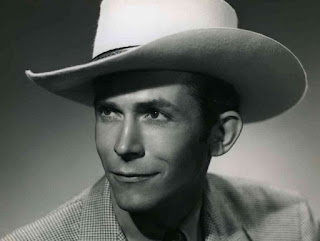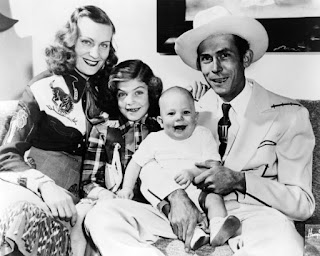Buddy Holly was hardly the awkward geek that his amateurish, poorly lit promotional photos suggest. Duane Eddy, the twangy guitar rocker who appeared with him in 1958, once described Buddy as a “well-built” six-footer who had “wavy hair” and was “very good looking.”
While not avowedly political, fifties rock was revolutionary. It urged people to do whatever they wanted to do, even if it meant breaking the rules. Like so many of his generation, Buddy was transformed by rock ’n’ roll from a warbling C&W bluegrass country boy into an early Freedom Rider who went into a hostile South with a busload of black R&B stars. His relationship with black musicians became a powerful symbol of the fusion of R&B and rockabilly—the spark that ignited rock ’n’ roll as we know it today.
Through all the drama of a short but eventful life, Buddy Holly remains one of the more appealing public figures of mid-century America. He was capable of heroically transcending his ingrained Texas prejudices, yet he remained loyal to family and friends. In the music business, he was a gullible youth who was cheated out of a fortune. As a friend he could be generous to a fault, yet crafty as a fox. He was attracted to all sorts of women. While Elvis Presley was worshiped as a sex idol, people reserved a special love for Buddy Holly. He mirrored the ordinary teenager and symbolized both the guilelessness of the era and its repression. In his square suits and Slim Jim ties, he looked like an honor student who made A’s in algebra, but when he went onstage and blasted off with “Oh Boy,” the anchors of the past no longer held.
Buddy neglected his schoolwork through his junior year. Years later, when his tests and term themes were auctioned at Sotheby’s, the New Yorker magazine reviewed his book report on Robert Frost and pronounced it—by homework standards —“a masterpiece.” “Buddy was cocky, but he had a lot to be cocky about,” says Buddy's teacher Robert Knight: “He was what experts in interpersonal relations call a ‘bipolar 8.’ He was very self-confident and got things done. Students who weren’t that self-confident were irritated by him and took the attitude. Buddy was a visionary young man and had difficulty with them.”
Buddy Holly left the United States for the first time in 1958, carrying rock ’n’ roll—the music as well as its highly subversive message of freedom—to the world at large. Though he appears to have had little interest in politics, his music planted the seeds of a larger cultural revolution everywhere. Buddy’s forthcoming trip to England, set for March 1958, at first seemed to him quite the most important event of his lifetime. But in a conversation with [brother] Larry Holley, Buddy said that nothing would ever be as meaningful to him as the day he was baptized: “He wasn’t no saint by any means. He certainly wasn’t a goody-goody. He was a saint in the fact that he accepted Christ as his savior when he was younger.” Buddy always kept a copy of the hymn “What a Friend We Have in Jesus” handy. Like Hank Williams, he loved hymns and was fascinated by “What a Friend,” in which the composers Joseph Scriven and Charles C. Converse describe a way to turn over worries and achieve inner peace.
Buddy Holly left the United States for the first time in 1958, carrying rock ’n’ roll—the music as well as its highly subversive message of freedom—to the world at large. Though he appears to have had little interest in politics, his music planted the seeds of a larger cultural revolution everywhere. Buddy’s forthcoming trip to England, set for March 1958, at first seemed to him quite the most important event of his lifetime. But in a conversation with [brother] Larry Holley, Buddy said that nothing would ever be as meaningful to him as the day he was baptized: “He wasn’t no saint by any means. He certainly wasn’t a goody-goody. He was a saint in the fact that he accepted Christ as his savior when he was younger.” Buddy always kept a copy of the hymn “What a Friend We Have in Jesus” handy. Like Hank Williams, he loved hymns and was fascinated by “What a Friend,” in which the composers Joseph Scriven and Charles C. Converse describe a way to turn over worries and achieve inner peace.
Unlike many who achieve early stardom, Buddy retained his humility. Maria Elena Holly said in 1993: “He said he had an appointment. I called in and Murray Deutch said for him to wait. In the meantime he started a conversation. That was when he asked me if I wanted to go out to dinner with him.” She was charmed when Buddy attempted to speak Spanish with her: “How are you, Señorita?” Neither of Buddy’s LPs —The Chirping Crickets and Buddy Holly— made the Billboard Top 40 in America. Years later, rock critics would place both albums near the top of their all-time best LP lists.
Buddy took Maria to dinner at P. J. Clarke’s (the popular pub on Third Avenue that had been used in the filming of The Lost Weekend in the 1940s); she still recalls how he suddenly rose from the table and said, “Excuse me a minute, Maria Elena. I’ll be right back.” When they’d entered the restaurant they’d noticed a flower vendor standing on Third Avenue, just outside the door. Buddy now went to the vendor, selected a red rose, and hurried back inside. “This is for you,” he said, “and would you marry me?” The gap in his life since the loss of Echo McGuire had left him lost and adrift emotionally.
He’d found, in his typically impulsive way, the girl he wanted to marry, someone with whom he could share what he called 'true love ways': dining out, exchanging hopes and dreams, laughing, and being romantic together. “Music is my life,” he told Maria Elena. “I want people to feel wonderful and great when they hear my music.”
His voice in "Learning the Game" is edged with bittersweet irony as he drives home the truth that romantic love is the cause of most human suffering. There is something deeply comforting, even healing, in the way Buddy defines heartache as the common lot of mankind. “Buddy wouldn’t hurt my feelings for anything,” Maria Elena remembers. By the end of 1958 Buddy Holly’s life had become all but unlivable. When asked in 1992 if the original Crickets were intent on a reconciliation with Buddy, Larry Holley simply said, “I think that was another fictitious thing.” His funds were frozen in New Mexico, largely as a result of having given Norman Petty power of attorney over his business affairs. Bankruptcy had forced him to accept a dangerous bus tour in one of the worst midwestern winters on record.
Buddy was now on the "Winter Dance Party" tour without management, but even when Petty had represented him, Buddy had been subjected to exhausting conditions on previous GAC tours. In the Midwest's “icy breath of death rolling down low across the land” (as F. Scott Fitzgerald described it in Flappers and Philosophers) it was sheer chaos for the performers: On the way to Fort Dodge, the bus was so cold that once again they were in danger of frostbite. Carl Bunch (victim of frostbite and hospitalized) was convinced that “Satan” was determined to stop the tour — In a 1981 interview with Bill Griggs, he’d refer to Buddy as the musical point man of a “massive rebirth” of Christ consciousness throughout the world. Buddy by this point was “just a high-class bum being kicked around on the road.” By the time they bumped and skidded into Clear Lake (frozen solid for the winter of 1958–59), Buddy knew he couldn’t endure another long bus ride.
Robert Frost once wrote a poem called “A Soldier.” In it, the soldier falls in battle, but Frost says the force of his fall shoots his soul on to heaven. And so it was, I like to think, with the singers who fell so hard on this cold and merciless ground.
Despite the liberties the moviemakers took with historical fact, The Buddy Holly Story turned out to be disarmingly lovable, thanks largely to Gary Busey’s performance, a tour de force of acting and singing. Though vocally unimpressive (painfully obvious when one listens to the sound-track album), Busey knew how to handle a guitar. More importantly, Busey knew how to act, turning in a performance of such sincerity and conviction that no one cared whether it resembled Buddy. Just prior to the film’s release, Robert Gittler, the writer of the screenplay, committed suicide. Lubbock, ever predictable, failed to lobby hard enough for the world premiere and lost out to Dallas, where the movie opened on May 18, 1978, at the Medallion Theater. –"Buddy Holly: A Biography" (2014) by Ellis Amburn
Buddy Holly's melodies and arrangements were a huge influence on the Beatles. ("At least the first 40 songs we wrote were Buddy Holly-influenced," said Paul McCartney). With the whirlwind they were on in 1964, the first thing John Lennon asked when he got to The Ed Sullivan Show was, "Is this the stage that Buddy Holly played on?" Listen to the songs on the first three Beatles albums. Take their voices off, and it's Buddy Holly. Same with the Rolling Stones. The magic that Buddy Holly created was nothing short of a miracle. The fact that he died at 22 is just ridiculous. That tells you all you need to know about just how focused and visionary he was. Source: www.rollingstone.com
The Beatles: Photographs from the Set of Help! (2015) by Emilio Lari, Alastair Gordon, with Introduction by Richard Lester. There are great candid and posed shots of the Beatles, many unseen for years or never published, throughout. Musicians will enjoy the close-up images of the band with its famed guitars: George Harrison with his Gibson acoustic, John Lennon with his Rickenbacker, Paul McCartney with his violin-shaped Hofner bass. We’ve seldom seen these instruments so closely and looking so shiny and new. The same is true for the pictures of the Beatles themselves. They look so young, fresh and lively that it’s hard to believe the pictures are more than 50 years old. It’s an excellent collection of one photographer’s intimate view of the Beatles, featuring mostly unfamiliar and very compelling images of history’s most famous band. Source: boingboing.net



























































